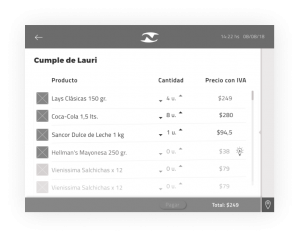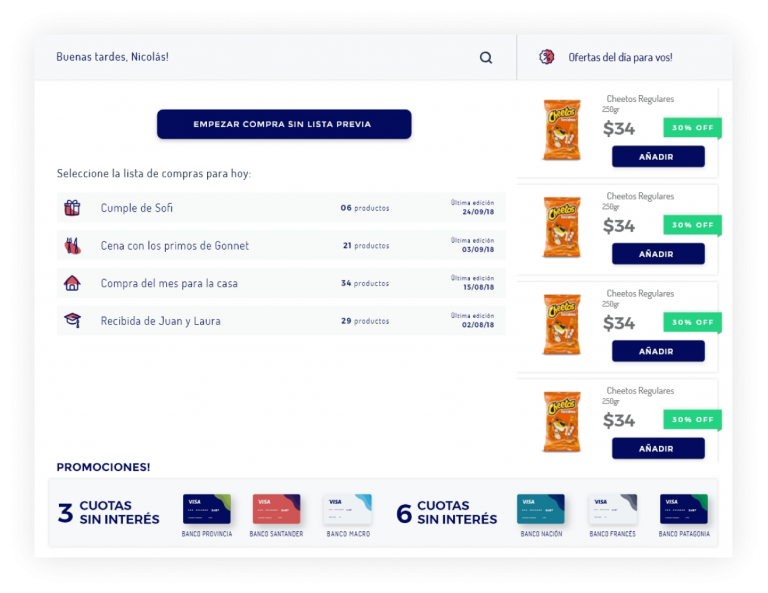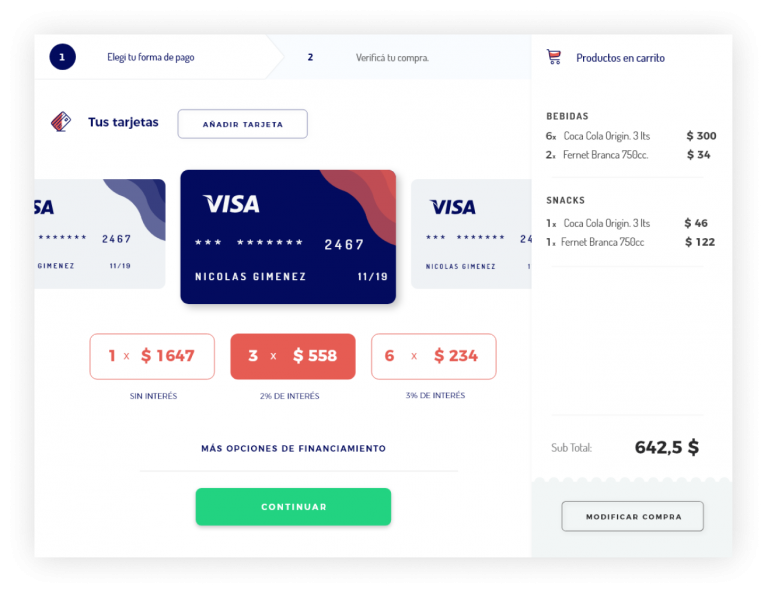Nini: The Wholesale Supermarket
–
A large wholesale supermarket in Buenos Aires wanted to attract a new retail audience. Not only wholesale sales, but also to offer a designed experience to the general customers.

Project Summary
Team size: 5 participants
Duration: 5 months
Core tasks: Web & Mobile Application, Smart Shopping Cart
Methodologies used: Business Research, Benchmarking, Usability Testing, Ideation Sessions, User Research & Discovery, User personas, User interview and usability testings, Interaction Design, Wireframes de contenido y estructura, Prototype, Visual Design, UI Guidelines, UI Kits
The results
At the end of the process, once we tested the interface usability and the efficiency of actions to complete a task, we designed the visual aspects of the UI. We selected strategically the color, fonts, composition, grids, accessibility metrics, that worked best for these products.




How we ended up with this result?
First, getting to know the supermarket in depth
This was the Supermarket’s website where the products list was a downloadable pdf. It had repetitive information, hierarchy problems and lack of organization.
So let’s take a look to the desktop version and mobile site:

Positive aspects
- Best prices
- The products are easy to find
- Offers good discounts and promotional products
Not very positive aspects
- Far from the city
- The processes of parking, shopping and payment are taking too long.
- Big amount of consumers = long lines to everything
What kind of people go to Nini?
As we had to design a new shopping experience, we should know our customers first (and really well). So we did interviews, surveys, journey maps and on. Here we have our two more representative profiles:


"The real value of user research comes from increasing our understanding of who our users are. "

Jared Spool
Maker of Awesomeness at @CenterCentre/@UIE
The insights on the table
Once we had a deeper view about the supermarket, we defined the fundamental insights to continue with the ideation sessions.
(!) Time factor
It is a crucial point in the decisions of the users.
(!) Ineffective organization
It does not stimulate a pleasant or receptive experience. The journey becomes tedious and endless.
(!) Remoteness
The remoteness with the city center discourages choosing it as the first option.
(!) Lack of sense of community
It does not know its users or generate links with them.
Mission statement
Nini needs to generate a pleasant and optimized shopping experience for a new audience, because users decisively value the use of their time.
Optimize + Integrate + Learn + Collaborate
Let’s bring some ideas into life
We were thinking what we could do to design something new, a differentiator, because of being such an explored sector.
Through several tools such as brainstorming sessions, mind mapping, design idea card deck and unstructured discussions, we came out with a variety of unexpected ideas.

In order to reduce the number of queues and people in the place, we design an online shopping site where the user can simply proceed to pick up the order. This also facilitated the logistics of home delivery that the supermarket could not develop at that time.
Prototyping
Through the web, mobile app (iOS and Android) and smart shopping cart prototypes, usability testings were taking part with ten supermarkets real users.








Previous
Next




